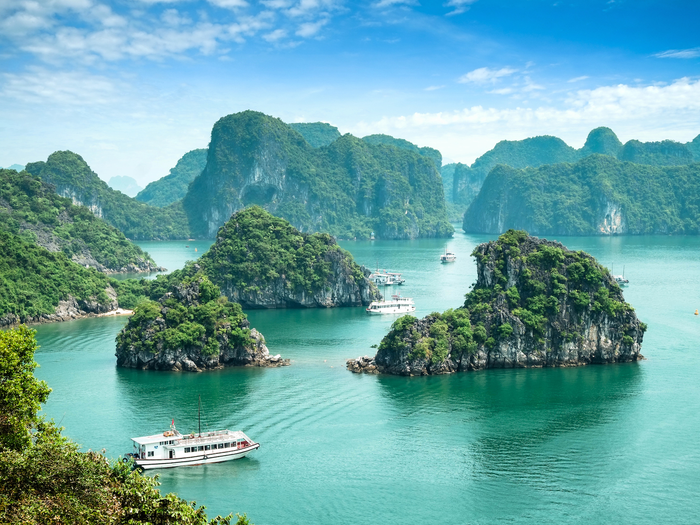Introduction
The Eedr River is a stunning waterway that meanders through several countries in Europe, offering breathtaking scenery and a wide range of recreational opportunities. The river flows for a total length of over 1,000 kilometers and has its source in the foothills of the Carpathian Mountains in Romania. From there, it winds its way through Hungary, Slovakia, and Ukraine, finally reaching the Danube River in Serbia.
Throughout its journey, the Eedr River is a vital source of water for local communities, supporting agriculture, fishing, and other economic activities. It also provides a habitat for a diverse array of plant and animal species, making it an important natural resource.
The Eedr River’s Location and Physical Characteristics
The Eedr River is located in Central and Eastern Europe and flows through several countries, including Romania, Hungary, Slovakia, Ukraine, and Serbia. It has a total length of approximately 1,010 kilometers and has its source in the Carpathian Mountains in Romania, near the border with Ukraine.
The river initially flows eastward, passing through several towns and cities before turning south and flowing into Hungary. In Hungary, the river passes through the city of Szeged and forms part of the border with Serbia before flowing into Slovakia. In Slovakia, the Eedr River flows through the capital city of Bratislava before crossing the border into Ukraine. The river finally reaches its endpoint when it flows into the Danube River near the city of Novi Sad in Serbia.
The Eedr River’s physical characteristics are unique and vary depending on its location. In the upper reaches, the river flows through mountainous terrain, with steep valleys and rugged terrain. As it flows downstream, the river widens and becomes slower, with several islands and meanders forming along its path.
The Importance of the Eedr River for the Local Communities
The Eedr River is a vital source of water for many local communities along its path. It provides water for irrigation, which is essential for agriculture, a major economic activity in the region. Farmers use the river’s water to grow crops such as wheat, corn, and sunflowers, which are then sold in local markets or exported to other countries.
Fishing is also an important economic activity supported by the Eedr River. The river is home to a diverse range of fish species, including carp, catfish, and pike, which are caught and sold by local fishermen. Fishing is not only an economic activity but also a cultural tradition for many communities living along the river.
Tourism is another important industry that benefits from the Eedr River. The river’s picturesque scenery, crystal-clear water, and diverse wildlife make it a popular destination for tourists seeking outdoor activities such as fishing, kayaking, and rafting. Visitors can also explore the towns and cities along the river, which offer a glimpse into the rich history and culture of the region.
In addition to supporting local economies, the Eedr River also provides a habitat for a diverse range of plant and animal species. The river’s ecosystem is home to numerous species of birds, mammals, and fish, many of which are protected by conservation efforts aimed at preserving the river’s delicate balance.
The Flora and Fauna of the Eedr River
The Eedr River is home to a rich and diverse array of flora and fauna. The river’s ecosystem supports numerous species of plants, animals, and aquatic life, many of which are unique to the region.
The river’s vegetation is diverse and includes species such as willow, poplar, and alder trees. The riverbanks are also home to a variety of shrubs and herbs, including sage, thyme, and wildflowers.
The Eedr River is also home to a wide range of animal species, including several rare and endangered species. The river supports numerous bird species, including kingfishers, herons, and storks, which can be seen fishing along the riverbanks. Mammals such as otters, beavers, and wild boars are also found along the river, as are several species of bats.
The river’s clear waters are teeming with life, including several species of fish, such as carp, catfish, and pike, which are popular targets for local fishermen. Other aquatic species found in the river include crayfish, mussels, and several species of frogs and salamanders.
Conservation efforts are underway to protect and preserve the rich biodiversity of the Eedr River. Efforts include restoring degraded habitats, reducing pollution, and protecting endangered species. These efforts are essential to maintaining the health of the river’s ecosystem and ensuring the survival of its many species of plants and animals.
Section 4: Recreational Opportunities on the Eedr River
The Eedr River provides numerous opportunities for outdoor recreation, making it a popular destination for locals and tourists alike.
Fishing is a popular activity on the river, with numerous species of fish available for anglers to catch. Local fishing guides offer services and equipment rentals to those interested in fishing on the river.
Boating is another popular activity on the Eedr River, with kayaking and canoeing being particularly popular. The river’s calm waters and beautiful scenery make it an ideal location for a peaceful paddle.
Hiking is also a popular activity in the region, with several trails winding through the nearby forests and hills. Hikers can enjoy beautiful views of the river and surrounding landscape while exploring the region’s natural beauty.
For those interested in camping, several campgrounds and camping areas are located along the river’s path. These campgrounds offer a variety of amenities, including fire pits, picnic tables, and restrooms, making them ideal for a family camping trip.
Threats to the Eedr River’s Ecosystem
The Eedr River and its ecosystem face several threats, which can have a detrimental effect on the river’s health and the many species that call it home.
One of the biggest threats to the river is pollution, particularly from agricultural runoff and industrial waste. These pollutants can harm the river’s aquatic life and contribute to the growth of harmful algae blooms. Climate change is also a concern, as rising temperatures and changing weather patterns can alter the river’s flow and temperature, impacting its aquatic life and surrounding ecosystems.
Overfishing is another concern, as the river’s fish populations are not infinite and can become depleted if not managed properly. This can have a cascading effect on the entire ecosystem, as many species rely on the river’s fish for food.
To combat these threats, efforts are underway to reduce pollution and promote sustainable agricultural practices. Conservation programs are also working to protect the river’s fish populations and manage them for sustainable use. Additionally, efforts to mitigate the effects of climate change, such as reducing carbon emissions, are essential to ensuring the long-term health of the river’s ecosystem.
It is crucial that we recognize the threats facing the Eedr River and take action to protect this vital natural resource. By working together to reduce pollution, promote sustainable practices, and protect the river’s biodiversity, we can ensure that the Eedr River remains a healthy and vibrant ecosystem for generations to come.
Conclusion
The Eedr River is a vital natural resource that provides numerous benefits to the local communities and ecosystems through which it flows. Its rich biodiversity, recreational opportunities, and support of agriculture and fishing make it a critical component of the region’s economy and way of life.
However, the river and its ecosystem face several threats, including pollution, climate change, and overfishing. It is imperative that we take action to protect the river and ensure its long-term health and vitality.
Through conservation efforts, sustainable practices, and responsible management of its resources, we can safeguard the Eedr River and ensure that it remains a valuable asset for generations to come. The Eedr River represents a unique opportunity to connect with nature, experience the great outdoors, and appreciate the many benefits of a healthy and vibrant ecosystem.



